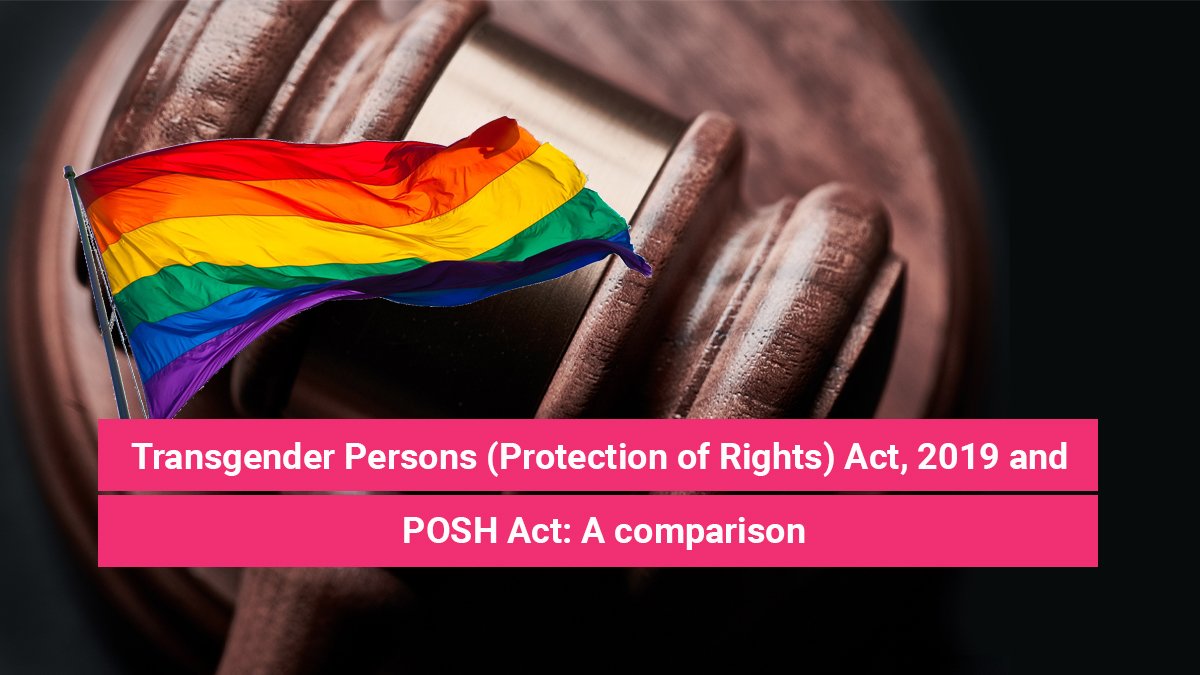The Hon’ble Supreme Court of India in its 2014 judgement of NALSA v. Union of India expounded the reading of Article 21 of the Constitution of India and held that a person’s self-defined sexual orientation and gender identity is integral to their personality without which a person cannot enjoy their right to life and liberty. The Supreme Court by providing this transformative reading of Article 21 affirmed the fundamental right of transgender persons and recognized a third gender in case one does not ascribe to either gender in the binary i.e. male or female.
Consequently, the Union Government to further the rights and welfare of the transgender community enacted the Transgender Persons (Protection of Rights) Act, 2019 and Rules, 2020 (“The Transgender Act”). The Transgender Act aims to end discrimination against transgender persons in accessing education, employment and healthcare. It also recognises the right to self-perceived gender identity of individuals.
The journey of the Transgender Act has followed similar trajectory to that of the Sexual Harassment of Women at Workplace (Prevention, Prohibition and Redressal) Act, 2013 (“POSH Act”). The Supreme Court in the matter of Vishaka vs. State of Rajasthan held that under Article 21 right to life means life with dignity and the same cannot be provided to women without ensuring safe working environment. The court in this judgement not only directed the Union Government to frame suitable laws to prevent sexual harassment of women at workplace but went ahead and framed guidelines, popularly termed as Vishaka Guidelines, which shall be applicable in the ensuring period. Consequently, in 2013 the Union Government notified POSH Act to not only prevent and prohibit sexual harassment of women at workplace but also provide a redressal mechanism to the women.
Therefore, the objective of the two laws is to empower two of the most discriminated communities of our society and provide them dignity and equal opportunity.
While the POSH Act is not gender neutral and provides protection only to women with lack of clarity on application to transgender persons, however, when read with the Transgender Act and the NALSA judgment, it would appear (and a view can be taken) that the POSH Act would provide protection to a transgender women (who may or may not have undergone surgery).
This protection would appear to be in line with the decision of the High Court of Delhi in the case of Anamika vs. Union of India. In its judgement the High Court observed that a cognizable offence under the provision of section 354A, the Indian Penal Code, 1860 (PIC), in particular sub-clause (i), (ii) and (iv) is made out on the complaint by a transgender person (identifying as a woman), the same shall be registered, in accordance with law, in terms of the decision of the Hon’ble Supreme Court in the case of NALSA. This judgment indicates the intent of the judiciary to include transgender persons under the protection of law and to not exclude them from feeling safe in society.
Further, regulations etc. may also have to be seen. For example, the University Grants Commission, in 2016, notified India’s first gender-neutral sexual harassment Regulations for students. However, in spite of all this, the big question still remains – what about those transgender persons who do not identify as women?
While incidents of brutal crimes against women do not seem to reduce and to have the POSH Act specifically for women cannot be argued, however, as more organizations realise the need for protecting and creating a safe work environment for all employees, the need for the law to update itself with the times only accentuates.
Employers today are wanting to take the initiative to protect all vulnerable people from sexual harassment. As the unwelcome behaviours and type of harassment detailed under the POSH Act may be experienced by any person at a workplace, irrespective of their gender, there may be a need to either think about a separate law that covers all or the POSH Act to be amended to incorporate the society’s needs. In the meantime, clarifications from courts on this matter will also go a long way.
While the definition of safe workplace might differ in the two acts, the objective to preserve the freedom and life (with dignity at workplace) remains the same. Moreover, both the acts entail grievance redressal mechanism for reporting violations – with an Internal Committee set up under the POSH Act and a Complaint Officer under the Transgender Act. Whilst the constitution of the Internal Committee is well-detailed, no specifics regarding the eligibility of a Complaint Officer is provided. Lastly, the two acts seek to provide a safe workplace for an individual to work to the best of their ability without which right to practice any profession, or to carry on any occupation, trade or business under Article 19 would remain a distant dream.
– Shreya Kanaujia, Legal Associate & Lawyer – Inclusion at Work
 Cart is empty
Cart is empty 

